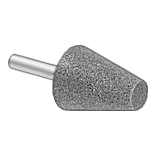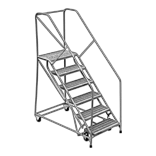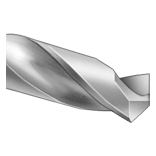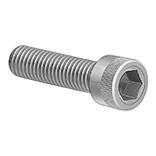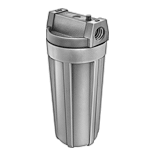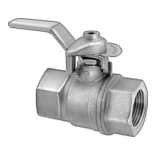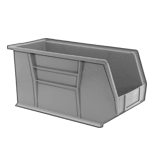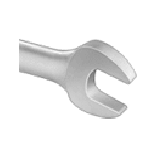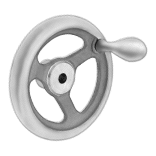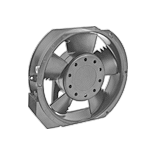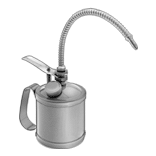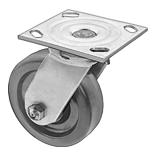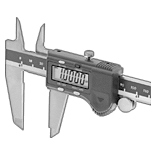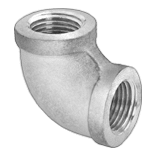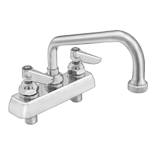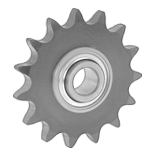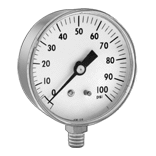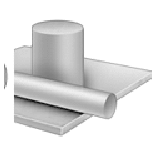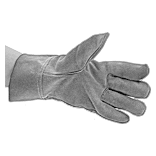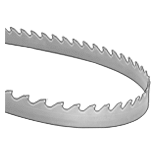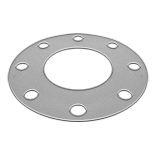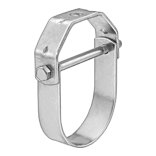Laser Welding Safety Goggles

An adjustable strap keeps these goggles secure on your head better than safety glasses. Use them to guard your eyes from harmful light during laser welding and traditional welding. Since they can be worn for both traditional and laser welding, you can switch between the two without needing to swap out your safety goggles. They meet ANSI Z136.1 specifications for safety when using lasers. When laser welding, always wear these goggles with a laser welding helmet or hood—they’re slim enough to fit underneath. Do not wear these goggles under a regular welding helmet for laser welding, because they do not offer sufficient protection.
Visible light is the percentage of visible light that passes through the lens. The lower the percentage, the more light is blocked. Make sure enough light passes through to see your welding work clearly but not so much that it becomes dangerous.
Optical density indicates how much light a lens absorbs at a specific wavelength. The higher the density, the more UV, infrared, and visible light is blocked. Powerful lasers often require an optical density of 5 or higher.
Lens | |||||||||||
|---|---|---|---|---|---|---|---|---|---|---|---|
| Shade No. | Visible Light | Optical Density | Color | Material | Ht. | Wd. | Headband Material | Features | Specifications Met | Each | |
Wraparound Lens | |||||||||||
| 3 | 14% | 7 @ 10,600 nm | Green | Polycarbonate Plastic | 2" | 2 1/4" | Elastic | Adjustable Headband, Padded Frame | ANSI Z136.1, ANSI/ISEA Z87.1+ | 00000000 | 000000 |
| 5 | 3% | 7 @ 10,600 nm | Green | Polycarbonate Plastic | 2" | 2 1/4" | Elastic | Adjustable Headband, Padded Frame | ANSI Z136.1, ANSI/ISEA Z87.1+ | 00000000 | 00000 |
Laser Welding Safety Glasses

Shield your eyes from harmful light during laser or traditional welding. These glasses meet ANSI Z136.1 specifications for laser safety. Since they can be worn for traditional welding as well as laser welding, you can switch between the two without needing to swap out your safety glasses. When laser welding, always wear them with a laser welding helmet or hood—they’re slim enough to fit underneath without a problem. Do not wear these glasses under a regular welding helmet when laser welding—they do not offer sufficient protection.
Visible light is the percentage of visible light that passes through the lens. The lower the percentage, the more light is blocked. Make sure enough light passes through to see your welding work clearly but not so much that it becomes dangerous.
Optical density indicates how much light a lens absorbs at a specific wavelength. The higher the density, the more UV, infrared, and visible light is blocked. Powerful lasers often require an optical density of 5 or higher.
Lens | Frame | ||||||||||
|---|---|---|---|---|---|---|---|---|---|---|---|
| Shade No. | Visible Light | Optical Density | Color | Material | Color | Material | Temple-to-Temple Wd. | Features | Specifications Met | Each | |
Regular Lens | |||||||||||
Arms with Adjustable Length and Tilt | |||||||||||
| 3 | 14% | 7 @ 10,600 nm | Green | Polycarbonate Plastic | Black | Nylon Plastic | 5 5/16" | Adjustable Arms | ANSI Z136.1, ANSI/ISEA Z87.1 | 00000000 | 000000 |
| 5 | 2.5% | 7 @ 10,600 nm | Green | Polycarbonate Plastic | Black | Nylon Plastic | 5 5/16" | Adjustable Arms | ANSI Z136.1, ANSI/ISEA Z87.1 | 00000000 | 00000 |
Laser Welding Face Shields
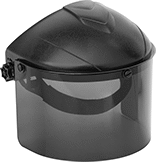
The lens on these shields filters out harmful light to protect your eyes during traditional and laser welding. They meet ANSI Z136.1 specifications for laser safety. The curved design offers better peripheral vision than laser welding goggles and additional face protection from impact, sparks, and radiation. To meet ANSI Z87.1 standards for eye protection, wear these shields with compliant safety glasses. Customize the shield’s fit by twisting the easy-turn knob on the ratchet adjustment.
Visible light is the percentage of visible light that passes through the lens. The lower the percentage, the more light is blocked. Make sure enough light passes through to see your welding work clearly but not so much that it becomes dangerous.
Optical density indicates how much light a lens absorbs at a specific wavelength. The higher the density, the more UV, infrared, and visible light is blocked. Powerful lasers often require an optical density of 5 or higher.
Shade number indicates how much light is filtered by lenses. The higher the shade number, the darker and more protective the lens.
Lens | |||||||||||
|---|---|---|---|---|---|---|---|---|---|---|---|
| Visible Light | Optical Density | Shade No. | Color | Material | Ht. | Wd. | Thick. | Hat Size | Specifications Met | Each | |
Flip-Up Lens | |||||||||||
| 2% | 5 @ 850-2,700 nm 6 @ 190-400 nm 6 @ 9,000-11,000 nm 7 @ 1,000-2,500 nm 8 @ 1,200-2,450 nm | 5 | Green | Acrylic Plastic | 5 1/2" | 16 1/2" | 0.1" | 7-8 | ANSI Z136.1 | 00000000 | 0000000 |
| 18% | 5 @ 870-1,200 nm 6 @ 190-400 nm 6 @ 1,000-1,100 nm 6 @ 9,000-11,000 nm 7 @ 1,020-1,100 nm | 3 | Green | Acrylic Plastic | 5 1/2" | 16 1/2" | 0.1" | 7-8 | ANSI Z136.1 | 00000000 | 000000 |
Filter Lenses for Laser Welding Helmets and Goggles
Replace scratched lenses in your laser welding helmet or goggles. These lenses keep harmful UV and infrared light from damaging your eyes. Do not use with regular welding helmets or goggles.
Optical density indicates how much light a lens absorbs at a specific wavelength. The higher the density, the more UV, infrared, and visible light is blocked. To meet ANSI Z136.1 standards for protection from lasers, factor the strength of your laser. Powerful, Class 4 lasers require an optical density of 5 or higher.
Visible light is the percentage of visible light that passes through the lens. The lower the percentage, the more light is blocked.
For technical drawings and 3-D models, click on a part number.
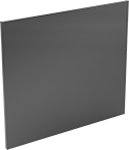
Lens | |||||||
|---|---|---|---|---|---|---|---|
| Shade No. | Optical Density | Visible Light | Color | Material | Specifications Met | Each | |
2" Ht. × 4 1/4" Wd. | |||||||
| 3 | 5 @ 870-1,200 nm 6 @ 190-400 nm 6 @ 1,000-1,100 nm 6 @ 9,000-11,000 nm 7 @ 1,020-1,100 nm | 18% | Green | Acrylic Plastic | ANSI Z136.1 | 0000000 | 0000000 |
| 5 | 5 @ 850-2,700 nm 6 @ 190-400 nm 6 @ 9,000-11,000 nm 7 @ 1,000-2,500 nm 8 @ 1,200-2,450 nm | 2% | Green | Acrylic Plastic | ANSI Z136.1 | 0000000 | 000000 |
4 1/2" Ht. × 5 1/4" Wd. | |||||||
| 3 | 5 @ 870-1,200 nm 6 @ 190-400 nm 6 @ 1,000-1,100 nm 6 @ 9,000-11,000 nm 7 @ 1,020-1,100 nm | 18% | Green | Acrylic Plastic | ANSI Z136.1 | 0000000 | 000000 |
| 5 | 5 @ 850-2,700 nm 6 @ 190-400 nm 6 @ 9,000-11,000 nm 7 @ 1,000-2,500 nm 8 @ 1,200-2,450 nm | 2% | Green | Acrylic Plastic | ANSI Z136.1 | 0000000 | 000000 |
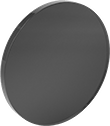
Lens | 2" Dia. | |||||||
|---|---|---|---|---|---|---|---|---|
| Shade No. | Optical Density | Visible Light | Color | Material | Specifications Met | Pkg. Qty. | Pkg. | |
| 3 | 5 @ 870-1,200 nm 6 @ 190-400 nm 6 @ 1,000-1,100 nm 6 @ 9,000-11,000 nm 7 @ 1,020-1,100 nm | 18% | Green | Acrylic Plastic | ANSI Z136.1 | 2 | 0000000 | 0000000 |
| 5 | 5 @ 850-2,700 nm 6 @ 190-400 nm 6 @ 9,000-11,000 nm 7 @ 1,000-2,500 nm 8 @ 1,200-2,450 nm | 2% | Green | Acrylic Plastic | ANSI Z136.1 | 2 | 0000000 | 000000 |
